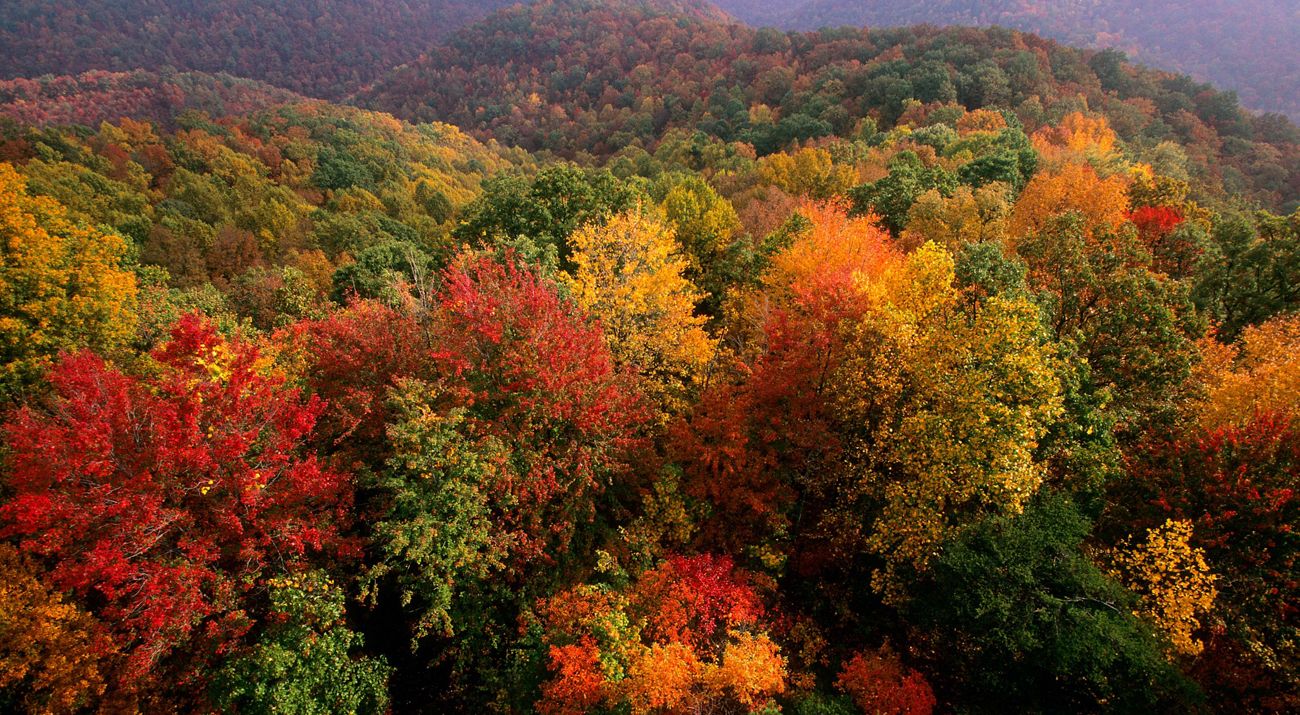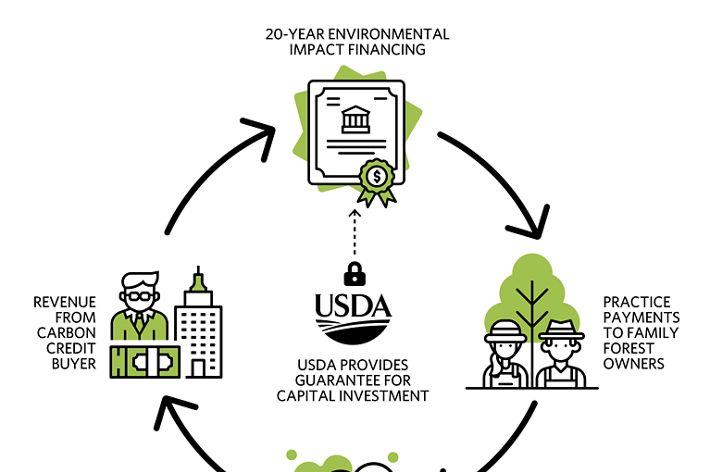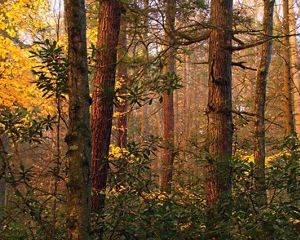The Rural Forest Markets Act Boosts Rural Economies and Protects Family Forests

Bipartisan proposals in Congress would help small-scale, family forest owners access new economic opportunities and increase the long-term health of their forests.
Families and individuals own 39% of U.S. forests—more than any other ownership group, including the federal government.
These forests offer clean air and water, provide habitat for wildlife and store vast amounts of carbon. With the right actions to restore forest health, family forests can capture an additional 267 million metric tons of carbon dioxide, the equivalent of taking 57 million cars off the road.
The overwhelming majority of family forest owners want to keep their land forested. But with one in three living on less than $50,000 a year, financial need can be a major driver of land use conversion and other actions that threaten long-term forest health.
Voluntary carbon markets provide one solution to this problem, via carbon projects that pay landowners to sustainably manage their forests. However, costly barriers to entry lock small-scale forest owners out of this market. Through a financial guarantee program, the Rural Forests Market Act makes it possible for families to participate in the voluntary carbon market—all at no cost to taxpayers.
In December 2023, Senators Debbie Stabenow, D-Mich., Mike Braun, R-Ind., and Bob Casey, D-Pa., introduced the Rural Forest Markets Act in the Senate.
Rural Forest Markets Act Supports Climate Action
-
39%
Families and individuals own 39% of U.S. forests—more than any other ownership group, including the federal government.
-
$150M
RFMA provides loan guarantees of up to $150 million for state agencies, nonprofits and companies to help family forest owners participate in the voluntary carbon market.
-
267M
With the right actions to restore forest health, family forests can capture an additional 267 million metric tons of carbon dioxide.

Less than 5% of longleaf pine forests remain in the United States. States, the federal government and conservation groups, including TNC, are working to save these Southern forests—and the species that depend on them. The Rural Forest Markets Act can support landowners who want to protect their longleaf forests from development.
Why Congress Should Support this Legislation
-
Big benefits for climate, water and wildlife
This voluntary incentive program helps small-scale landowners adopt science-based practices that increase how much carbon their forests capture and store. By improving forest health and longevity, the Rural Forest Markets Act also improves water supplies and wildlife habitat.
What are Carbon Markets?
How the Rural Forest Markets Act Works On the Ground to Support Landowners
Picture a typical American family forest owner. The family owns 67 acres, the national average for forest owners of this type. With major bills on the horizon, they’re considering logging their land for additional income which would lead to a decline in the long-term health of their forest.
While the family has heard that the voluntary carbon market can provide an additional financial benefit to cover forest ownership costs, the process is expensive at first and requires special expertise. There’s the matter of surveying the land to establish a carbon storage baseline, and the difficulties of drafting a forest management plan. Then there’s implementation—carrying out practices to help the forest store more carbon, such as removing invasive plants and setting prescribed burns.
But RFMA's financial guarantees mean that state agencies, nonprofits and companies can unlock private investment dollars to shoulder the up-front costs of the family’s entry into the voluntary carbon market from covering the costs of land surveys to supporting the creation of a forest management plan.
Go Deeper: How RFMA Supports Nature and People
Quote: Alix Murdoch

With families owning nearly 40% of the forestland in the United States, it’s important that they can keep their forests healthy and in the family. This proposed legislation would help do so, at very little cost to the government. It’s a win for family forest owners and all of society.
Explore More Policy Priorities
Policy makes conservation possible. Learn how TNC is advancing environmental policy.
EXPLORE MOREStay Up to Date on Conservation Policy
Sign up to receive news and policy updates from The Nature Conservancy.


